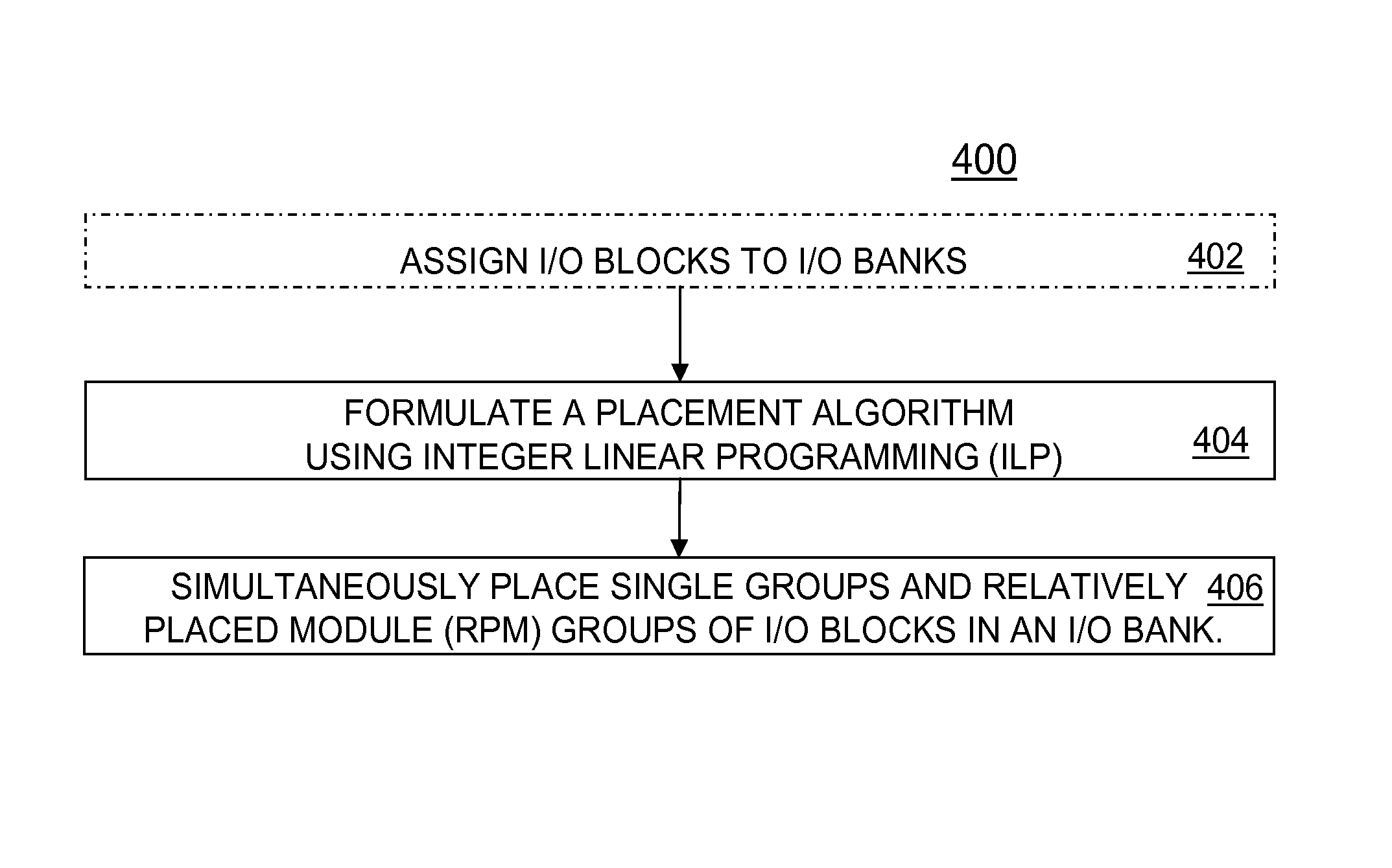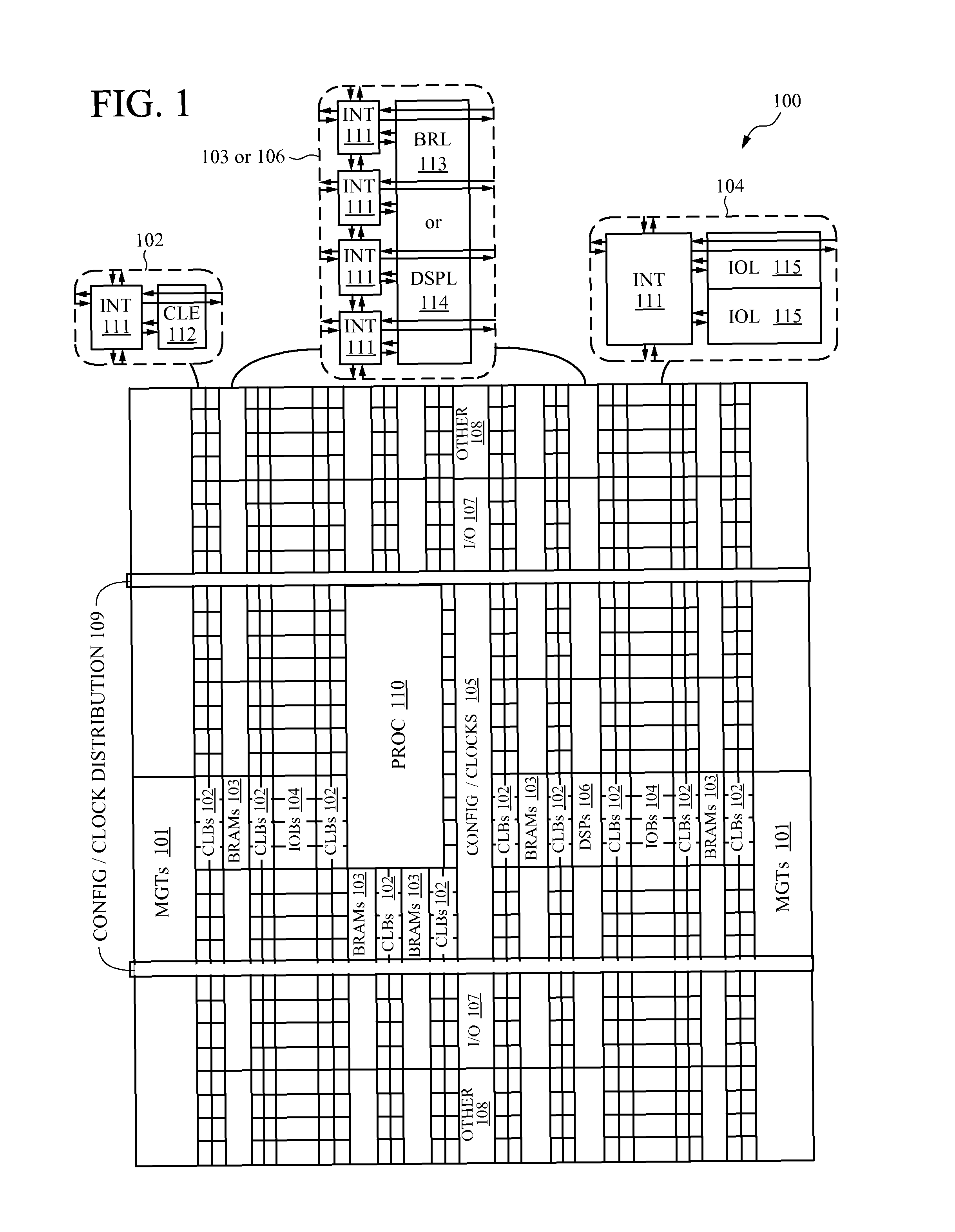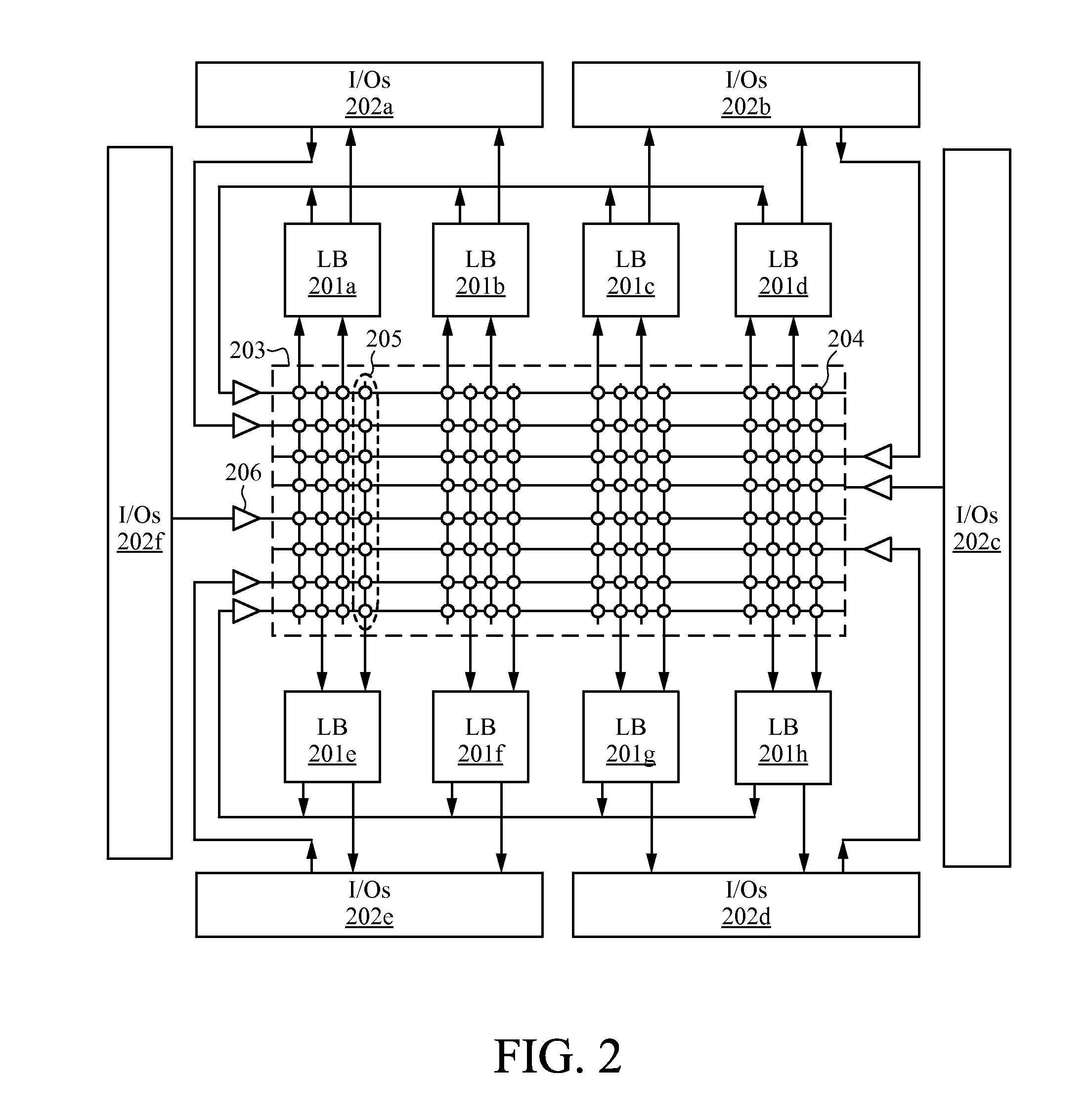Placement of I/O blocks within I/O banks using an integer linear programming formulation
a technology of integer linear programming and i/o blocks, applied in the field of circuit design, can solve the problems of inability to place i/o rpms anywhere in the bank, inability to assign clock-io blocks to any site in the bank, and inability to implement i/os of these two i/o standards in the same i/o bank. achieve the effect of fast and efficien
- Summary
- Abstract
- Description
- Claims
- Application Information
AI Technical Summary
Benefits of technology
Problems solved by technology
Method used
Image
Examples
Embodiment Construction
[0040]Embodiments of the present invention are applicable to a variety of integrated circuits (ICs). Some embodiments have been found to be particularly applicable to and beneficial for programmable logic devices (PLDs). Explanations and descriptions of various embodiments of the present invention are illuminated by way of specific examples utilizing PLDs such as field programmable gate arrays (FPGAs). However, the present invention is not limited by these examples, and can be applied to virtually any IC that includes programmable resources.
[0041]Referring to FIGS. 3 and 4, flow charts illustrating methods 300 and 400 respectively of input / output (I / O) block placement assigned to an input / output bank are shown. As noted above and from a broader perspective, the generic Select IO placement problem can be divided into 2 separated tasks, namely, the assignment of all I / O blocks to available I / O banks (shown as optional step 402) and the sequential placement that creates a mapping betwe...
PUM
 Login to View More
Login to View More Abstract
Description
Claims
Application Information
 Login to View More
Login to View More - R&D
- Intellectual Property
- Life Sciences
- Materials
- Tech Scout
- Unparalleled Data Quality
- Higher Quality Content
- 60% Fewer Hallucinations
Browse by: Latest US Patents, China's latest patents, Technical Efficacy Thesaurus, Application Domain, Technology Topic, Popular Technical Reports.
© 2025 PatSnap. All rights reserved.Legal|Privacy policy|Modern Slavery Act Transparency Statement|Sitemap|About US| Contact US: help@patsnap.com



